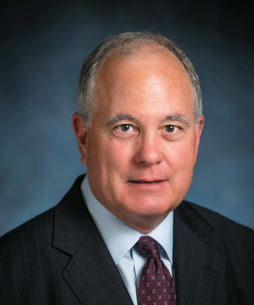(Editor’s Note: On Monday, the George W. Bush Institute will sponsor a conference on monetary policy. As part of this conference, the Bush...
(Editor’s Note: On Monday, the George W. Bush Institute will sponsor a conference on monetary policy. As part of this conference, the Bush Institute asked Paul Rowsey, chairman of The Real Estate Council of Dallas, to explain the impact of monetary policy upon the commercial real estate industry.)
When it comes to monetary policy, perception is reality. In the United States and globally, the actions the Federal Reserve takes to promote economic growth, stabilize prices and reduce unemployment—such as decreasing or increasing the money supply, setting interest rates at the Fed Funds window, or changing reserve requirements for financial institutions—have a transparent and immediate effect on the stock and bond market for all to see. Even the anticipation of changes in monetary policy can produce a calamitous rise or fall resulting in panicked calls to brokers and compulsive checking of stock prices on smartphones.
The effect of monetary policy on commercial real estate is no less dramatic; however, it’s not always as immediately apparent to onlookers. Real estate capitalization rates and pricing are correlated to interest rates, with both current and future expectations influencing the market today. Job creation, the broader economy, housing demand and state and local finance costs, as well as infrastructure expenditures all are heavily impacted by interest rates. There is still a large pipeline of refinancing in our near term future that will determine long-term progress in capital availability. All of these factors assume that commercial real estate asset classes are equal, which we know they are not. Multifamily, for example, has rebounded faster than other investment classes. Depending on the geography, other asset classes are following.
Real estate has long been considered a hedge against inflation. As the Fed begins to taper its purchase of Treasury Bonds and unwinds its program of Quantitative Easing, many expect inflation to accelerate. The correlation with real estate returns and the inflation rate is 76% when inflation is greater than average. Thus, there is an expectation that real estate returns will increase in an accelerating inflation environment.
With the globalization of the economy, the Fed’s influence has been somewhat diminished. There is still concern about the long-term sustainability of any recovery efforts given the instability in the global markets.
Quantitative easing will definitely impact commercial real estate investment and development. Once the cost of money increases, depending on the market, developers and investors will have tough questions to ask in order to determine if a project or investment will generate the return on investment that investors demand, especially given the variety of investment choices available.
Housing demand and affordability is heavily influenced by monetary policy and the fluctuation of interest rates. With mortgage rates at historic lows, home sales in some markets in recent years have skyrocketed. Because the rise or fall of interest rates so obviously drives residential property sales and pricing—by increasing or decreasing the cost of mortgage capital—many people assume the deciding factor in commercial real estate sales and valuation is interest rates. Interest rates, though, are only one factor influencing commercial property values. Because interest rates also affect capital flows, the supply and demand for capital, and investors’ required rates of return on investment, they drive property prices in a variety of ways. Real estate values are influenced by the supply and demand for properties, property location and the cost of new development. But income—the flow of rents over the life of a lease—is truly the determining factor in valuation of commercial real estate.
Because job creation is the primary driver of real estate demand, the Fed’s actions to strengthen the economy and boost GDP growth can ultimately lead to an increase of construction cranes on the horizon. Though the impact of monetary policy on the stock and bond market may be immediate, its impact on real estate is just as meaningful and significant.
 Paul Rowsey is chairman of The Real Estate Council and The Real Estate Council Foundation. He is also president and CEO of Compatriot Capital. Prior to forming Compatriot Capital, Paul was a founder and the president and CEO of E2M Partners.
Paul Rowsey is chairman of The Real Estate Council and The Real Estate Council Foundation. He is also president and CEO of Compatriot Capital. Prior to forming Compatriot Capital, Paul was a founder and the president and CEO of E2M Partners.































